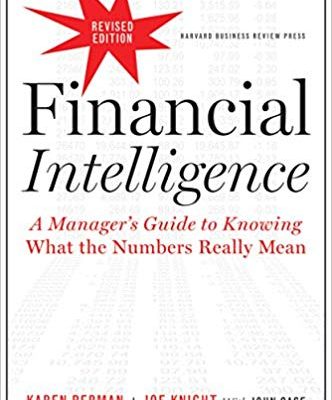Review Financial Intelligence, Revised Edition: A Manager’s Guide to Knowing What the Numbers Really Mean
by KAREN BERGMAN and JOSEPH KNIGHT
Description
Ever since this financial book debut back in 2006, Financial Intelligence became one of the most respected guidebooks when it comes to understanding numbers. This book is very comprehensive that financial professionals and those without finance background resort to this book to acquire a guide to numbers. Its unique discussion does not only present numbers, but it also highlights their relevance and why they are of great importance.
This recent edition intends to bring an up to date lecture about finance, all while employing the basics of the field. This setup is ideal for financial practitioners who need to utilize figures and statistics to operate their ventures. What makes this book relevant is its way of addressing concerns that surfaced from recent times, including the controversial financial crisis, and other issues about financial and accounting intelligence.
About the Authors
Financial Intelligence, Revised Edition: A Manager’s Guide to Knowing What the Numbers Really Mean is collaborative efforts of Karen Berman and Joseph Knight, who are also the founding associates of the Business Literacy institute Situated in Los Angeles. They render mentorship for managers at organizations, including American Express, P&G, and Tyco International. Their names made it to several media, including BusinessWeek, USA Today, and the Los Angeles Times.
Table of Contents
Preface: What Is Financial Intelligence?
PART ONE- The Art of Finance (And Why It Matters)
- You Can’t Always Trust the Numbers
- Spotting Assumptions, Estimates, and Biases
- Why Increase Your Financial Intelligence?
- The Rules Accountants Follow- and Why You Don’t Always Have To
PART TWO- The (Many) Peculiarities of the Income Statement
- Profit Is an Estimate
- Cracking the Code of the Income Statement
- Revenue: The Issue Is Recognition
- Costs and Expenses: No Hard-and- Fast Rules
- The Many Forms of Profit
PART THREE- The Balance Sheet Reveals The Most
- Understanding the Balance Sheet Basics
- Assets: More Estimates and Assumptions (Except for Cash)
- On the Other Side: Liabilities and Equity
- Why the Balance Sheet Balances
- The Income Statement Affects the Balance Sheet
PART FOUR- CASH IS KING
- Cash Is a Reality Check
- Profit= Cash (And You Need Both)
- The Language of Cash Flow
- How Cash Connects with Everything Else
- Why Cash Matters
PART FIVE- RATIOS: Learning What The Numbers are Really Telling You
- The Power of Ratios
- Profitability Ratios: The Higher the Better (Mostly)
- Leverage Ratios: The Balancing Act
- Liquidity Ratios: Can We Pay Our Bills?
- Efficiency Ratios: Making the Most of Your Assets
- The Investor’s Perspective: The “Big Five” Numbers and Shareholder Value
PART SIX- How to Calculate (and Really Understand) Return of Investment
- The Building Blocks of ROI
- Figuring ROI: The Nitty- Gritty
PART SEVEN- Applied Financial Intelligence: Working Capital Management
- The Magic of Managing the Balance Sheet
- Your Balance Sheet Levers
- Homing In On Cash Conversion
PART EIGHT- Creating a Financially Literate Company
- Financial Literacy and Corporate Performance
- Financial Literacy Strategies
- Financial Transparency: Our Ultimate Goal




